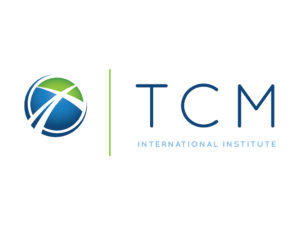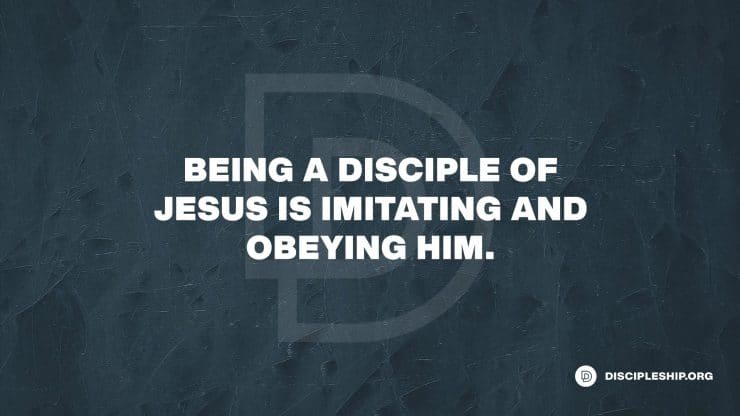The Stages of Disciple Making (Part 2)
In my previous post on this topic, I introduced the concept of the stages by which Jesus made disciple makers. I summarize the five stages or phases in the following way:
- The “Come and See” Phase – John 1:39–4:46
- The “Come and Follow Me” Phase – Matthew 4:19; Mark 1:16–18
- The “Come and Be with Me” Phase – Mark 3:13-14; Luke 6:12–16
- The “Come Take Up Your Cross” Phase – Mark 8:27–38; Matthew 16:13–27
- The “Go and Make Disciples” Phase – Matthew 28:18-20; John 20:21; Mark 16:15–16
Last time, I described the first two phases, and in what follows I will discuss the last three phases that can be identified in the gospels.
I want to avoid a sense that I am being formulaic or that we are imposing a structure of understanding on Jesus’ ministry that is foreign to the text of the Bible. Rather, I am simply trying to provide a helpful framework on the key turning points in Jesus’ ministry, ones that I have found to be reflective of what church leaders can experience as we seek to raise up disciple makers.
3. “Come and Be with Me”
Mark 3:13–14; Luke 6:12–16
The third phase in which Jesus raised up disciple makers is punctuated by a night of prayer. Luke 6:12–13 shows this inflection point—in a ministry that began with forty days of fasting and prayer and regularly showed a daily focus on prayer—as Jesus seeks the Father’s guidance before selecting the Twelve.
In these days he went out to the mountain to pray, and all night he continued in prayer to God. And when day came, he called his disciples and chose from them twelve, whom he named apostles.
It is hard to over-emphasize Jesus’ dependence on prayer as he made disciple makers. We do not know exactly what Jesus was praying about, but there is a clear connecting from his time of extended prayer (and staying up all night) and the 12 men that he chose to be disciple makers.
These men are called apostles. From this point forward these men will be the focus of his time and effort. There are three in whom Jesus will most deeply invest – Peter, James, and John. Bill Hull describes the nature of Jesus’ selection.
Jesus was willing to disappoint hundreds of disciples who just wanted to be near him, to literally touch him. He could have chosen them all and they all would have said yes. But Jesus had a plan, he knew what was ahead, he knew many wouldn’t make it.1
From this point forward, Jesus entrusts them with the message of the Sermon on the Mount (Matthew 5–7), they watch him being anointed by the sinful woman (Luke 7), and travel throughout Galilee together (Luke 8:1–3). He teaches parables publicly and then explains them in private to the twelve (Luke 8; Matthew 13). He exposes them to various miracles and circles back to them to see what they understand with regularity. Jesus’ concentration on the three (and the Twelve) show leaders today the importance of an intense focus on developing leaders.
How we apply the principles from this phase today?
The first and most important lesson from this phase is how to select the right kinds of people to be leaders. It is grounded first in prayer. Secondly it is grounded in praying about people that you have come to know. We have a great acronym that may help you select future leaders in which you will invest yourself: F.A.T.S.O. people
- Faithful (Luke 5:4–5)
- Available (Luke 5:1–3)
- Teachable (Luke 5:6–10a)
- Sendable (Luke 10:1–4) and
- Obedient (Matthew 28:19–20)
Jesus surfaced a focused leadership team and prioritized them. Selecting in the right people may be the most important decision a disciple making leader makes.
Secondly, I think Jesus was clear about why he was investing in the twelve. The word apostle in Greek means sent out. We think it is important to be clear about our intentions, and to do so early on. “I want to spend extra time with you so that we can grow closer and I can help you to become a disciple maker,” are words we might use. You establish the relationship as something will result in your disciples being sent out.
Thirdly, during this phase we want to not only expose and teach our future disciple makers to the teachings of Jesus, we want to be constantly debriefing them so that they gain practical and strategic guidance on what we are doing. Disciple making models should not just involve teaching and imitation, but also coaching, explanation and “the debrief.” Here is a simple but life changing formula.
- I do. You watch. We talk.
- I do. You help. We talk.
- You do. I help. We talk.
- You do. I watch. We talk.
- You do. Someone else watches. I do. Someone else watches.
The expression “we talk” is key—we are intentionally and regularly establishing a disciple-maker’s DNA every time we do that.
Key points in the third phase:
- In-depth prayer should guide those seeking to select disciple makers in this phase.
- Chose those who are FATSO people
- Be explicit about your intention to send these people out as disciple makers.
- Be intentional about debriefing and explaining why you do what you do for your apprentice.
- Mature spiritual children (ready for the next growth phase) and young adults are most common in this phase, but it can also include mature adults and spiritual parents who have been discipled in other churches or contexts before you got to know them personally.
4. “Come Take up Your Cross”
Mark 8:27–38; Matthew 16:13–27
The fourth phase is often a make-it or break-it phase. Scholars of the gospel of Mark teach us that when Jesus took his disciples to the district of Caesarea Philippi it was a fundamentally important turning point in Jesus’ ministry. It is also a crucial turning point as Jesus was making disciple makers. Caesarea Philippi is in the most Northern part of Israel; it was a non-Jewish area, away from the crowds. Jesus intentionally engaged his disciples in what, for many of them, was the most fundamental issue in becoming a future disciple maker.2
Mark describes this turning point in chapter 8:27–29:
And Jesus went on with his disciples to the villages of Caesarea Philippi. And on the way he asked his disciples, “Who do people say that I am…? Peter answered him, “You are the Christ.”
Two things should be noted: Jesus presses the disciples with a fundamentally important coaching question on his identity and Peter answers him rightly, that he is the Messiah (Christ).
Mark then records the decision point that Jesus wants his disciples to process (8:31–33).
And he began to teach them that the Son of Man must suffer many things and be rejected by the elders and the chief priests and the scribes and be killed, and after three days rise again. And he said this plainly. And Peter took him aside and began to rebuke him. But turning and seeing his disciples, he rebuked Peter and said, “Get behind me, Satan! For you are not setting your mind on the things of God, but on the things of man.”
Jesus explains that, as God’s Messiah, he is going to suffer and be killed. That is not Peter’s concept of the kingdom or of the Messiah. Peter believes in a different kind of Messiah and a different kind of kingdom. Peter’s discovery at this point is vital. Jesus strongly rebukes him, saying that he does not have the right mindset on this matter.
That encounter then leads to Jesus making a fundamental point about disciples and disciple makers (like the Twelve) in the next few verses (Mark 8:34–35).
And calling the crowd to him with his disciples, he said to them, “If anyone would come after me, let him deny himself and take up his cross and follow me. For whoever would save his life will lose it, but whoever loses his life for my sake and the gospel’s will save it.
The willingness to die to yourself is the distinguishing issue in the fourth phase.
Jesus kept emphasizing this point to his disciples moving forward (Mark 9:31–32; 10:32–34). James Fleming points out that, in the oral culture of the first century, the stories of the blind men just before Jesus’ three-fold confrontations with the disciples on this point (Mark 8:22–26), followed by the healing of another blind man right afterward (Mark 10:46–52) was Mark’s way, in the ancient culture of the first century, to point out the blindness of the disciples.
They needed to accept that Jesus would die and, as disciple makers, they had to be willing to die just like him.
This phase is significant because it is about the death of self to the false dreams and human aspirations imposed on God’s kingdom.
The narrative in the gospels, especially in Mark, is that from this point forward Jesus is going to Jerusalem where he will die. Initially Peter and the other disciples are blinded to it. They too have to die to their vision of what it meant to be a disciple. They too have to surrender to God’s kingdom and die to themselves. Judas will NOT die to his false vision and he betrays Jesus (Mark 14:10–11).
Peter says he will die for Jesus—he said emphatically, “If I must die with you, I will not deny you,” but he does not really understand (14:31). He abandons Jesus, but later has great remorse and returns.
The last supper and Garden of Gethsemane, just before the crucifixion, magnifies this point (John 13:1ff). Jesus serves his disciples and models what it is to forgo one’s selfish desires for the kingdom. Jesus tells them that they should become like him.
How we apply the principles from this phase today?
The focus is death to self.
A person cannot truly become a healthy disciple maker or truly live out the Gospel until he or she dies to themselves and surrenders his or her dreams to God.
Peter did it, but Judas did not.
This is a fundamental change of heart at a deep level that is inspired and nurtured by the Spirit of God. We have seen it lead to great fruit when future disciple makers leave successful careers or give up privileged positions, perks, and dreams because they are in conflict with God’s invitation into selfless service. It may not involve those things, but at some level, the willingness to die to self for the kingdom of God is established within a person’s inner being and disposition about life in this phase.
When a person is in a disciple maker position and his or her death to self has not been established, they will easily use other people or instill in them truths about being a disciple that are more reflections of their sinful mind or worldly aspirations. Once a person has truly surrendered and died to their dreams for the sake of God’s calling, they are on the path to becoming very effective disciple makers. It is now about God’s kingdom, not our kingdoms. It is now about other people, not ourselves.
Key points in the fourth phase:
- Pay attention to the motives of the heart of those you are discipling and pray for them the way Jesus prayed for Peter (Luke 22:31).
- Pray that the Holy Spirit leads future disciple makers through this challenging period and make note of the hardships that they are experiencing; hardships refine and purify our faith (Romans 5:3–5).
- In love and in close relationship, help those you are discipling to work through the death-to-self challenge
- Pray earnestly and intently for your disciples in this phase, they are on the precipice of making a big difference.
5. “Go and Make Disciples”
Matthew 28:18–20; John 20:21; Mark 16:15–16.
The fifth phase is the replication phase. Disciples need to be sent out to become disciple-makers themselves. They have been trained to be like their teacher (Luke 6:40). Note, the multiplication phase continues to require growth—we multiply while maturing—because we do not fully arrive in this life. In fact, to get to the next phase of maturity, we need to multiply because a certain amount of maturity is only achieved in the midst of the challenges of being a disciple maker.
Jesus describes this phase succinctly in John 20:21, “as the Father has sent me, I am sending you.” And in the great commission of Matthew 28:19–20 Jesus gives us the important details of what is involved in the commission of a disciple maker.
Therefore, go and make disciples of all nations, baptizing them in the name of the Father and of the Son and of the Holy Spirit, and teaching them to obey everything I have commanded you. And surely I am with you always, to the very end of the age.”
As described earlier, we have found that these verses provide a surprising amount of clarity on disciple making. Jesus sends his disciples out to make disciples—after he has shown them how to make disciples. Stated differently, Jesus gave the commission after showing his apostles how to fulfill it.
Please note some key elements from within the text of the great commission itself.
There is one key command—“make disciples”—and four supporting parts to that command (according to the Greek):3
- Go
- Baptize
- Teach Obedience
- Remember
We send people out to make disciples as Jesus made disciples.
Go – they are to go with a goal of making other disciples. Like Jesus, it starts as we go and enter into the lives of people. God has a heart for every people group on planet earth. He wants us to go and enter into the lives of people both near and far. As God’s motivation was his love (John 3:16) so our is love. There is nothing more loving than making disciples.
Baptize – Jesus told us to baptize people because baptism, as a personal expression of faith, inaugurates a person into the possession of the father, son and Holy Spirit.4 It marks conversion—which is both to salvation in Jesus and a new life as a disciple of Jesus. Conversion and baptism are not the goal, but the starting point as a person starts the disciple’s journey.
Teach Obedience – Jesus taught obedience-based disciple making. He did not commission his disciples to just teach his commands (as we often do today).5 He commission his disciple makers to teach obedience to all of his commands. So disciple making must include the practical aspect of obedience—what it is and how to do it. The commission envision development, after baptism, as disciples learn to obey all that Jesus taught (sanctification).
Remember – there is an expression in Greek found in verse 20 that literally says “and remember.” This expression, often translated, “behold,” or “surely” (NIV) often loses its force. We would state the expression this way today—“hey, remember.” Jesus wanted to punctuate for us the importance of remembering that he is present with us in disciple making. He wants us to note and remember his presence—disciple makers never go out, by themselves alone.
Those for expressions are helpful to note in disciple making.
And, again, we are best served if we remember that Jesus commissions us to follow his method of disciple making. He taught his disciples the supremacy of agape love (John 13:34–35) and then he commissioned them (and us) to go and make disciples just like he did.
How we apply the principles from this phase today?
The most important part about commissioning disciple makers is that, like Jesus, we have intentionally developed and led them to the point where they are spiritually and practically ready (with strategies and knowledge) to become disciple-makers. This is a relational, life on life process, that takes time.
The apostles had one another so they could help and support each other as they lived out this commissioning phase. We too should walk closely with those we send out. And all disciple-makers will continue to need support and help from other disciple-makers. We will all need each other until the end.
Key points in the fifth phase:
- Do your best to make sure that people are both spiritually ready (it is about the kingdom of God) and practically ready (they know what to do) before you send them out
- Pray for them and support them and remind them to rely on God through the Holy Spirit.
- Keep them focused on the basics that disciple making includes an emphasis on baptizing people into Christ and teaching them to obey all of Jesus’ teachings.
- Seek to ensure your disciples are ready – spiritual adults and spiritual parents should be the focus for this phase.
I hope that you have found this description of the phases in making disciple makers helpful. I summarize the five phases in the following manner.
- The “Come and See” Phase – John 1:39–4:46
- The “Come and Follow Me” Phase – Matthew 4:19; Mark 1:16–18
- The “Come and Be with Me” Phase – Mark 3:13-14; Luke 6:12–16
- The “Come Take Up Your Cross” Phase – Mark 8:27–38; Matthew 16:13–27
- The “Go and Make Disciples” Phase – Matthew 28:18-20; John 20:21; Mark 16:15–16
For a practical guide on how to make disciples today see the book I wrote with Josh Patrick, The Disciple Makers Handbook: Seven Elements of a Discipleship Lifestyle (Zondervan, 2017). Click here to purchase on Amazon.com.
Bobby Harrington
Notes
1 Conversion and Discipleship (Zondervan, 2016), 230.
2 See also James Fleming, Turning Points in the Life of Jesus (Biblical Resources, LaGrange, Georgia, 1999), 47ff, who discussed this turning point in Jesus’ life.
3 See especially, David Young, King Jesus and the Beauty of Obedience Based Discipleship (Zondervan, 2020). The participles in vv. 19–20 are subordinate to the command “make disciples” and explain how disciples are made. The first of these involves going and then the initiation into discipleship and the others focus on sanctification or obedience. See Craig Bloomberg, Matthew: An Exegetical and TheologicalExposition of Holy Scripture, The New American Commentary (Nashville: Broadman & Holman, 1992), 431.
4 See Twist, Harrington, and Young, Baptism: What the Bible Teaches (Renew, 2019).
5 See the encouraging teachings on this point in David Young, King Jesus and the Beauty of Obedience Based Discipleship (Zondervan, 2020).






